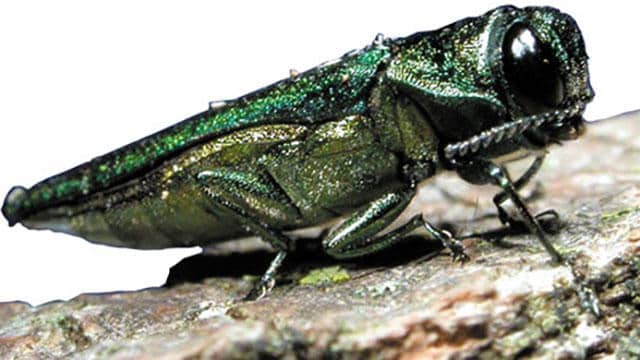Milton Trees Injected Due to Bug Infestation
Published August 23, 2017 at 4:55 pm

Bugs.
What are they good for?
Absolutely nothing (well, probably something, but let’s not be too quick to forgive them).
Bugs.
What are they good for?
Absolutely nothing (well, probably something, but let’s not be too quick to forgive them).
The Town of Milton recently reminded residents that, starting this month, contractors are injecting 250 infected ash trees with TreeAzin to help preserve the life of the trees.
Emerald Ash Borer is expected to destroy most of the ash tree species in town over the next two years — this action is part of a “proactive approach” to handle the EAB insect problem that’s infected the majority of ash trees in Milton.
EAB is an issue that has affected ash trees throughout Southern Ontario over the last few years.
TreeAzin is an insecticide to kill EAB insects and larvae and it isn’t harmful to humans or animals, according to the Town of Milton.
It’s made from Neem Tree seed extracts (very popular in India for everything from toothpaste to skincare) – and is well known amongst those with green thumbs.
Main areas currently being targeted include Laurier Ave., Rotary Park, Town Hall, Ruhl Dr. (and surrounding trail area to the north), and a few other isolated areas.
Trees marked with green dots will be treated, while trees marked with white dots are slated for removal.
Treatment for these trees will be repeated next year and their health evaluated for further action.
REMOVAL, REMOVAL
A contractor is continuing to remove roughly 1,500 mature ash trees that have been infected by the EAB.
All trees that have been removed will eventually be replaced, according to town officials.
Replacement trees will come from a blend of species in order to diversify the range of species types. This helps make the municipal tree canopy more resilient to any possible future infestations that may target a particular species of plants.
Some plantings are scheduled to occur after the ash tree removals in the fall of 2017, while others may not occur until the spring of 2018. This depends on the availability of certain species of trees, as well as the time of the year they are best suited for planting (e.g. spring vs. fall).
QUICK FACTS
- EAB is about half the size of a dime.
- The EAB was first discovered in 2002 in Michigan and has become a highly invasive pest in North America.
- It’s believed to have been imported via wooden shipping crates or pallets.
- The EAB larvae feed on the vascular tissues of the ash trees, and as a result, the trees lose their ability to use water and nutrients and the trees eventually die.
- There are no known domestic predators to this insect.
(Source: Town of Milton)
insauga's Editorial Standards and Policies advertising





